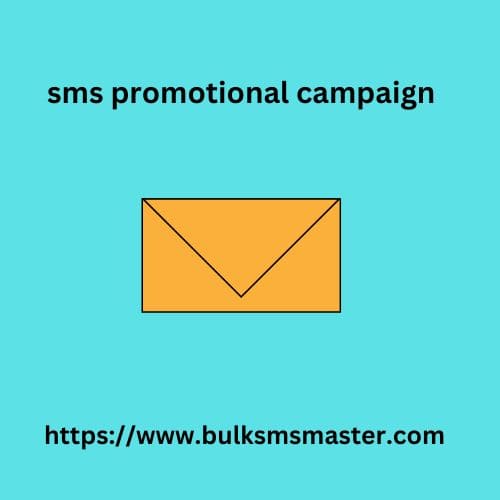Our wallets may not realize it, but human psychology plays a major role in our purchasing decisions. Emotions are a major influence, motivating us to buy things that make us feel good.
The excitement of a new product, the satisfaction of solving a problem, or the desire to treat yourself can all lead to a credit card sms promotional campaign swipe. Fear also plays a role. We may be afraid of missing out on a limited-time offer or worried about falling behind the latest trend.
Lead generation is the lifeblood of any online business. It’s how you build relationships with potential customers, foster interest, and ultimately drive sales. But to grab attention and inspire website visitors to open their wallets, your offers must be relevant and compelling enough.
Pop-ups are a powerful tool for displaying enticing offers, capturing leads, and increasing conversion rates. However, the key to their success lies not only in the product itself, but also in understanding the psychology behind why people click.
This guide will delve into the fascinating world of human psychology and equip you with the knowledge to craft pop-ups that are persuasive and informative.
The psychology behind irresistible offers
A. Scarcity and Urgency: The Power of “Now or Never”
Have you ever seen a “while supplies last” sign and suddenly felt an urge to snap up that item? Or maybe a sale countdown has convinced you to finally click “buy”? That’s the power of scarcity and urgency in action! These psychological principles tap into our basic human desire to avoid missing out on a good deal or limited-time opportunity.
Working principle:
- Fear of Missing Out (FOMO) : Scarcity creates a sense of FOMO, motivating people to act before the opportunity is gone. They don’t want to regret missing out on a chance to grab a great deal or miss out on a coveted item that’s in limited supply.
- Reinforces decision making: Urgency adds an element of time pressure, encouraging visitors to make a quick decision. This is particularly effective in overcoming indecision and prompting immediate action.
How to use it in a popup:
- Add a countdown timer : These visual timers create a sense of urgency by showing visitors exactly how much time is left to claim your offer.
- Show limited-time offers : Highlight the limited duration of a promotion, whether it’s a flash sale of a few hours or a special discount code valid for a week.
- Limited Quantity : Indicates that only a certain number of items are available at this discounted price. This works especially well for high-demand products.
- “Last chance” offers : Let visitors know this may be their last chance to get a specific deal. Phrases like “last chance,” “limited stock,” or “ending soon” can create a sense of urgency.
B. Social Proof and Authority: The Power of “If They Did It, So Can You”
Imagine you’re walking down a busy street and see a long line outside a bakery. Curiosity might prompt poptin vs. optinmonster: which one should you choose in 2024? you to join in, right? This phenomenon is called social proof , a powerful psychological principle that uses the behavior of others to influence our own decisions. In the context of pop-ups, social proof and its close cousin authority can be incredibly persuasive tools.
Why they work:
- Trust and Credibility : Testimonials, customer reviews, and logos of trusted brands can serve as valuable social cues for your product or service. People are more likely to trust something that others have tried and approved of.
- Reduce risk : By showcasing positive experiences from past customers, you can alleviate any anxiety potential buyers may have. Social proof subconsciously tells them, “If other people like it, I can try it, too.”
- Authority Figures : Having an endorsement from an expert or industry leader in your pop-up can add a layer of authority to your brand. People tend to trust the opinions of well-known figures, which makes them more likely to be influenced by their recommendations.
Bring social proof and authority to your pop-ups:
Here are some practical ways to incorporate these psychology principles into your pop-ups:
- Showcase customer testimonials : Include short quotes or snippets of positive reviews from real customers.
- Show social proof numbers : Show how many people have already purchased the product, downloaded your ebook, or subscribed to your email list.
- Include trust signals : Display logos of trusted payment processors, security certifications, or reputable companies you work with.
- Feature expert endorsements: If you’re endorsed by an industry leader or influencer, leverage their quote or logo in your pop-up.
C. Reciprocity and Loss Aversion: Your Secret Weapons
Have you ever felt grateful to someone who helped you? Or maybe you kept an item you rarely used simply because you didn’t want to “waste” it? These are powerful human tendencies, and understanding them can be the key to crafting an irresistible coupon popup.
Reciprocity: You scratch my back, and I’ll scratch yours
Reciprocity is the urge to return a favor to another person. People often feel an obligation to give back after receiving something of value. In the context of a pop-up, you can leverage this principle by offering something of value up front, such as a free trial, an exclusive discount, or a downloadable guide . By providing this initial value, you create a sense of obligation that makes it more likely that visitors will take the next step, such as signing up for your email list or making a purchase.
Loss Aversion: Don’t Miss Out
Humans naturally fear losing something more than gaining something of equal value. This is known as loss aversion. You can use this principle in your pop-ups to highlight content that your visitors might miss out on if they don’t take action.
Put it into practice:
Here are some examples of how to leverage reciprocity and loss aversion in pop-ups:
- Offer a free trial in exchange for an email address . This gives visitors a chance to experience the value japan data of your product firsthand, increasing the likelihood that they will convert into paying customers.
- Offer exclusive discount codes for signing up for your email list. Use coupon popups to create a sense of privilege and incentivize visitors to join your community to get valuable deals.
- Highlight limited-time offers with a countdown timer . This injects a sense of urgency and reminds visitors that the opportunity won’t last forever.
D. Frames and emotional triggers: the source of persuasion
Ever wonder why a “limited time offer” seems too good to miss? Or how a simple phrase like “don’t miss out” piques your interest? The answer lies in the power of framing and emotional triggers. These psychological principles tap into our subconscious desires and anxieties, influencing how we perceive and react to information.
Here’s how you can use them to create irresistible popup offers:
1. Framing: The art of rotating at right angles
Imagine two popups: One that says “Don’t miss out on 20% off!” and another that says “Get 20% extra value!” Both offer the same discount, but the second one focuses on the gain (more value) rather than the potential loss (missing out). That’s the power of framing. By emphasizing the positive aspects of your offer, you can make it seem more attractive and encourage action.
Here are some framing techniques you can use in pop-ups:
- Focus on the benefits: Highlight the benefits and value customers receive with your offer (e.g., “Unlock exclusive deals!” or “Upgrade your look for less!”).
- Limit availability : Create a sense of scarcity by mentioning a limited-time offer or limited quantity (e.g., “This offer ends in 24 hours!” or “Only 5 left in stock!”).
- Social Proof : Showing social proof (e.g., “Join the thousands of people who’ve already saved!”) builds trust and encourages visitors to follow suit.
2. Emotional Triggers: Uncovering What Excites Us
Humans are emotional creatures. By triggering specific emotions, you can influence decision making. Here are some emotions to consider:
- Excitement : Highlight exclusive offers, new product launches, or limited edition items to generate excitement.
- Fear of Missing Out (FOMO) : Use phrases like “Don’t miss out!” or “Only for a limited time!” to create a sense of urgency and encourage immediate action.
- The desire for exclusivity: Give email subscribers special discounts or early access to new products so they feel like part of a privileged group.
Remember: Don’t be manipulative. Focus on providing real value while using these techniques to drive your visitors to make positive decisions.
Putting it into practice
Now that we’ve explored the psychology behind how popups work, let’s put that knowledge into action! Here’s a step-by-step guide to crafting irresistible popup offers that grab attention and drive conversions:
Step 1: Define your target audience and goals
Who do you want to reach with your pop-up? Is your target audience new visitors, existing customers, or a specific audience segment? Understanding your target audience helps tailor offers and messaging for maximum impact.
Next, define your goals. Do you want to increase sales, grow your email list, or promote a new product launch? Knowing your goals will guide the type of offer you make.
Step 2: Grab instant attention
Your headline is the first impression your popup makes. Here’s how to craft a winner:
- Keep it short and simple: Aim for 6-10 words that are easy to read and understand.
- Highlight the benefit: Clearly communicate the value your offer provides to visitors (e.g., “Save 20% on your first order”).
- Leverage urgency or scarcity: Use phrases like “limited time offer” or “while supplies last” to create a sense of urgency and encourage immediate action.
- Spark curiosity: Ask a question or tease an offer to spark visitor interest (e.g., “Unlock an exclusive discount – enter your email”).

